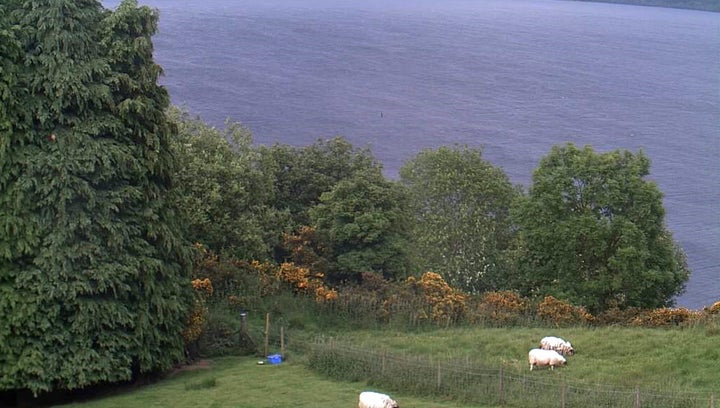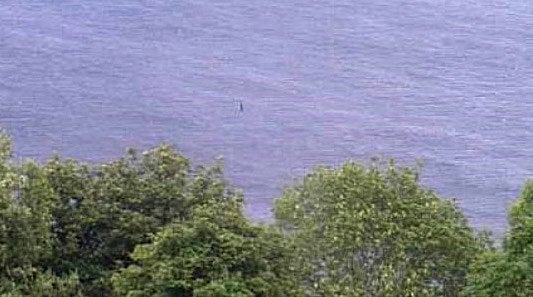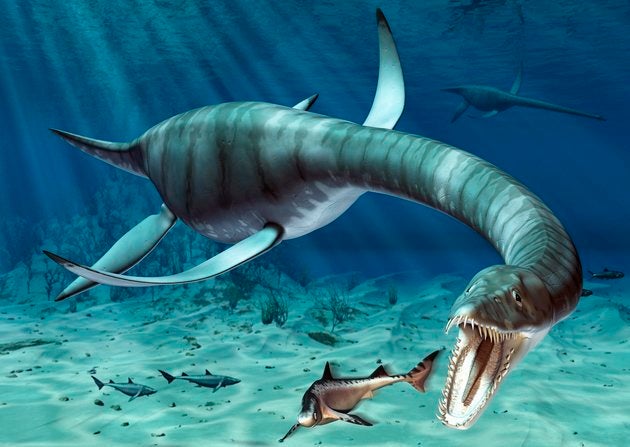As far as Loch Ness Monster sightings go, this one has the unlikely honour of being made from 4,000 miles away – via a webcam.
Paranormal investigator Jim Winiski was making his habitual checks on the official Loch Ness live cam from the comfort of his Iowa home, when he saw… Well it’s not entirely clear what he saw.
At first glance it looks more like a fin than the neck of a prehistoric monster [Jaws in Loch Ness?], but Winiski thought otherwise and reported the sighting to the Official Loch Ness Monster Sightings Register, where it has now been recorded.

The entry states: “ The sighting lasted 10-12 seconds and he reported that there was no boat activity in the area at the time.”
The webcam is located above Urquhart Bay and looks east over the loch.
Mikki Takala, who runs the webcam, told The Sun: “I’m delighted that a good image of Nessie has been seen again on our cameras.

“It is clear that Nessie is still alive and well and probably migrates to and from the loch – much like salmon and other creatures.”
Despite no conclusive evidence of the famed monster, the mystery and interest surrounding Nessie is worth an estimated £60 million to the Scottish economy, with hundreds of thousands of visitors travelling to Loch Ness every year in the hope of catching a glimpse.
According to lore, the serpentine beast has said to have haunted the murky waters of the loch since 1933.

Believed by many to be the last of a line of long-surviving plesiosaurs, (a Jurassic marine reptile) legend has it that the creature appears along with earth tremors and swirling bubbles.
Nessie first hit headlines in 1934 when the Daily Mail published what it claimed was the first picture of the beast.
The photo was later revealed to have been staged, but there has been no shortage of images since.

In recent months, sightings of an unidentified creature in the River Thames have led to speculation she may have been holidaying in the capital.
One possible candidate linked to the sightings is the wels catfish, which is the largest freshwater fish in Europe. It can live for decades, possibly even as long as 80 years, the National Geographic reveals.

In February twin Italian brothers caught a 9ft long wels catfish in the Po River of northern Italy.
The animal was dubbed “the monster of the Po” by the Italian media, the Telegraph reports.

